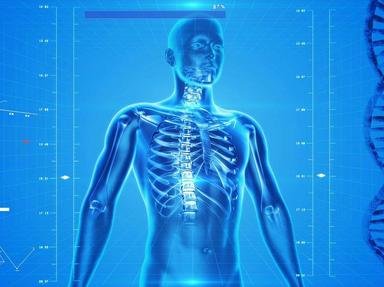Quiz Answer Key and Fun Facts
1. Which of the following is true concerning the parathyroid glands?
2. The skull is a fused series of bones in the adult. What is the only substantial opening from the skull, through which the midbrain and spinal cord passes out of the cranium?
3. There is a duct which empties 75% of the lymph drainage from the body back into the venous circulation at the superior vena cava. What is the name of this duct?
4. The typical cycles of sleep repeat about 5 times per night and include 4 stages of non-Rapid Eye Movement (REM) sleep and 1 stage of REM. In what sequence of stages is each repeating cycle?
5. Which of the following hormone types involve secretion of the hormone into a duct?
6. Both the immune system and the nervous system have dendritic cells.
7. Which of the following brain "supporting cells" release adenosine to promote the urge to sleep known as "sleep pressure"?
8. Which of the following is untrue?
9. We generally consider the immune system to be contained in lymph nodes. Tonsils and thymus gland are two sites of immune cells not within lymph nodes. Where else is this true?
10. The brachial plexus under the arm is part of which body system?
Source: Author
jstagamtome
This quiz was reviewed by FunTrivia editor
crisw before going online.
Any errors found in FunTrivia content are routinely corrected through our feedback system.
